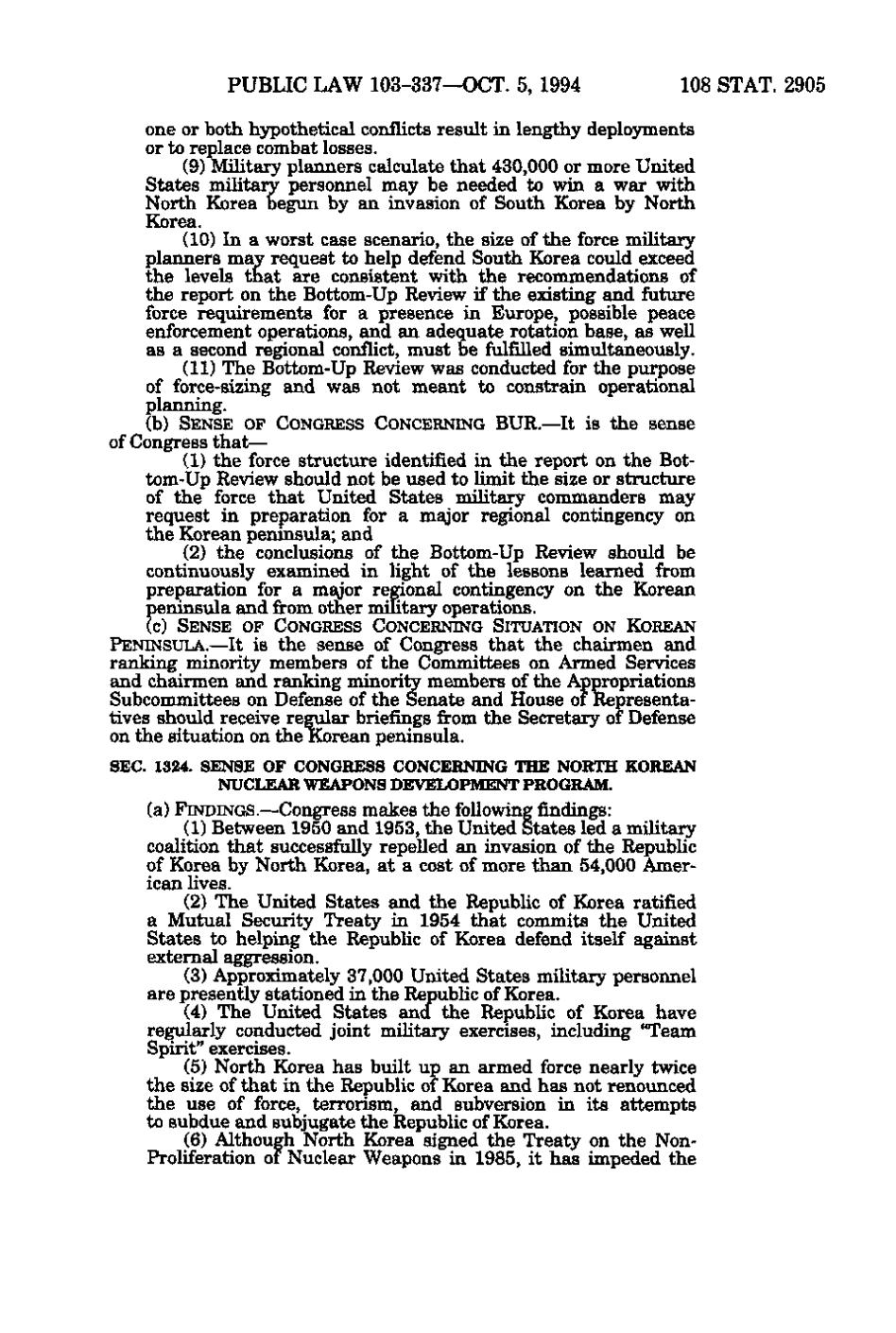PUBLIC LAW 103-337—OCT. 5, 1994 108 STAT. 2905 one or both hj^jothetical conflicts result in lengthy deployments or to replace combat losses. (9) Military planners calculate that 430,000 or more United States military personnel may be needed to win a war with North Korea begun by an invasion of South Korea by North Korea. (10) In a worst case scenario, the size of the force military planners may request to help defend South Korea could exceed the levels that are consistent with the recommendations of the report on the Bottom-Up Review if the existing and future force requirements for a presence in Europe, possible peace enforcement operations, and an adequate rotation base, as well as a second regional conflict, must be fulfilled simultaneously. (11) The Bottom-Up Review was conducted for the purpose of force-sizing and was not meant to constrain operational planning. (b) SENSE OF CONGRESS CONCERNING BUR.—It is the sense of Congress that— (1) the force structure identified in the report on the Bottom-Up Review should not be used to limit the size or structure of the force that United States military commanders may request in preparation for a major regional contingency on the Korean peninsula; and (2) the conclusions of the Bottom-Up Review should be continuously examined in light of the lessons learned from preparation for a major regional contingency on the Korean peninsula and from other military operations. (c) SENSE OF CONGRESS CONCERNING SITUATION ON KOREAN PENINSULA.—It is the sense of Congress that the chairmen and ranking minority members of the Committees on Armed Services and chairmen and ranking minority members of the Appropriations Subcommittees on Defense of the Senate and House of Representatives should receive regular briefings from the Secretary of Defense on the situation on the Korean peninsula. SEC. 1324. SENSE OF CONGRESS CONCERNING THE NORTH KOREAN NUCLEAR WEAPONS DEVELOPMENT PROGRAM. (a) FINDINGS. —Congress makes the following findings: (1) Between 1950 and 1953, the United States led a military coalition that successfully repelled an invasion of the Republic of Korea by North Korea, at a cost of more than 54,000 American lives. (2) The United States and the Republic of Korea ratified a Mutual Security Treaty in 1954 that commits the United States to helping the Republic of Korea defend itself against external aggression. (3) Approximately 37,000 United States military personnel are presently stationed in the Republic of Korea. (4) The United States and the Republic of Korea have regularly conducted joint military exercises, including "Team Spirit" exercises. (5) North Korea has built up an armed force nearly twice the size of that in the Republic of Korea and has not renounced the use of force, terrorism, and subversion in its attempts to subdue and subjugate the Republic of Korea. (6) Although North Korea signed the Treaty on the Non- Proliferation of Nuclear Weapons in 1985, it has impeded the
�
